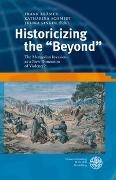Read more
Hardly any act of violence connects Europe and Asia like the Mongolian Invasion in the 13th century did. By 1300 the Mongols had conquered not only China, but also parts of Russia, Eastern Europe and the Middle East. Many sources in various cultures emphasized the peculiarity of the Mongolian invasion and the dimension of the collective suffering caused by the Nomadic invaders. The experience of the Mongols' attack became in the process of its historicizing also in a comparative or transcultural perspective extremely important for the identity of the defeated countries. Considering this fact, one has to wonder, whether the Mongols reached a new dimension of violence that left "traumatic marks" with a long-time impact on the collective consciousness. The various contributions highlight the far reaching influence of Mongolian violence on the various master narratives that were constructed after the invasions and sometimes even shaped modern formation of national identity.
Summary
Hardly any act of violence connects Europe and Asia like the Mongolian Invasion in the 13th century did. By 1300 the Mongols had conquered not only China, but also parts of Russia, Eastern Europe and the Middle East. Many sources in various cultures emphasized the peculiarity of the Mongolian invasion and the dimension of the collective suffering caused by the Nomadic invaders. The experience of the Mongols’ attack became in the process of its historicizing also in a comparative or transcultural perspective extremely important for the identity of the defeated countries. Considering this fact, one has to wonder, whether the Mongols reached a new dimension of violence that left “traumatic marks” with a long-time impact on the collective consciousness. The various contributions highlight the far reaching influence of Mongolian violence on the various master narratives that were constructed after the invasions and sometimes even shaped modern formation of national identity.

